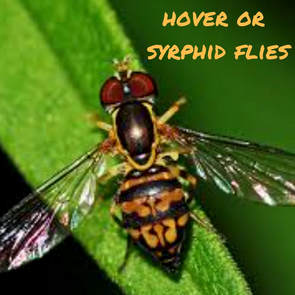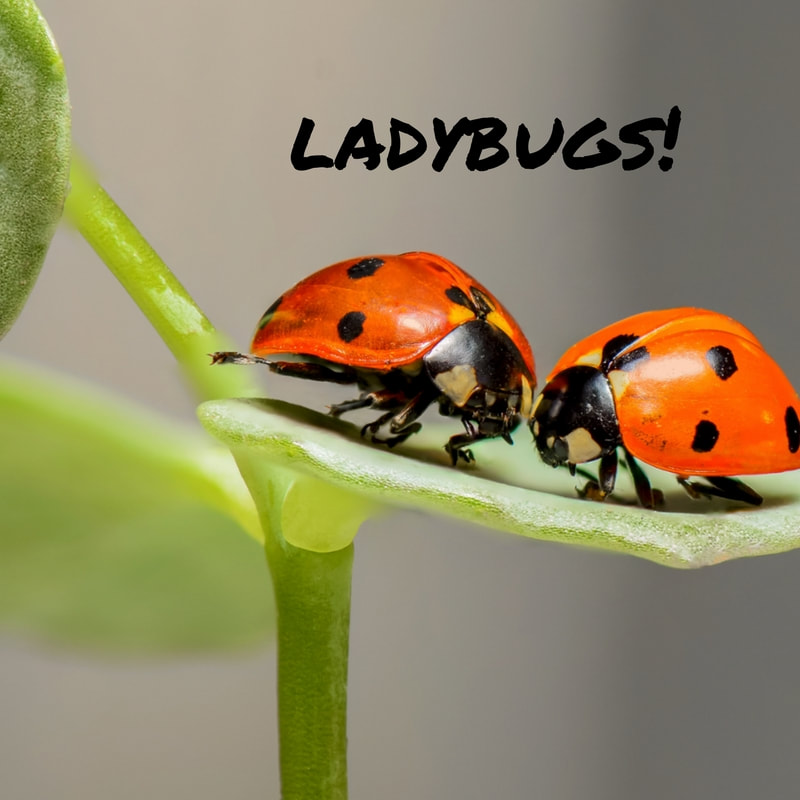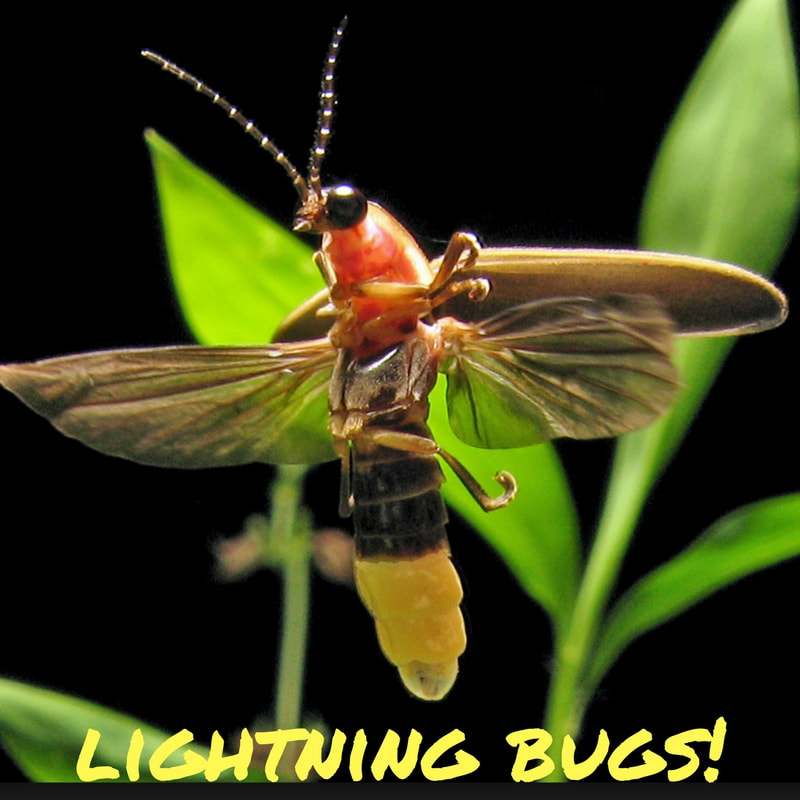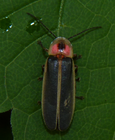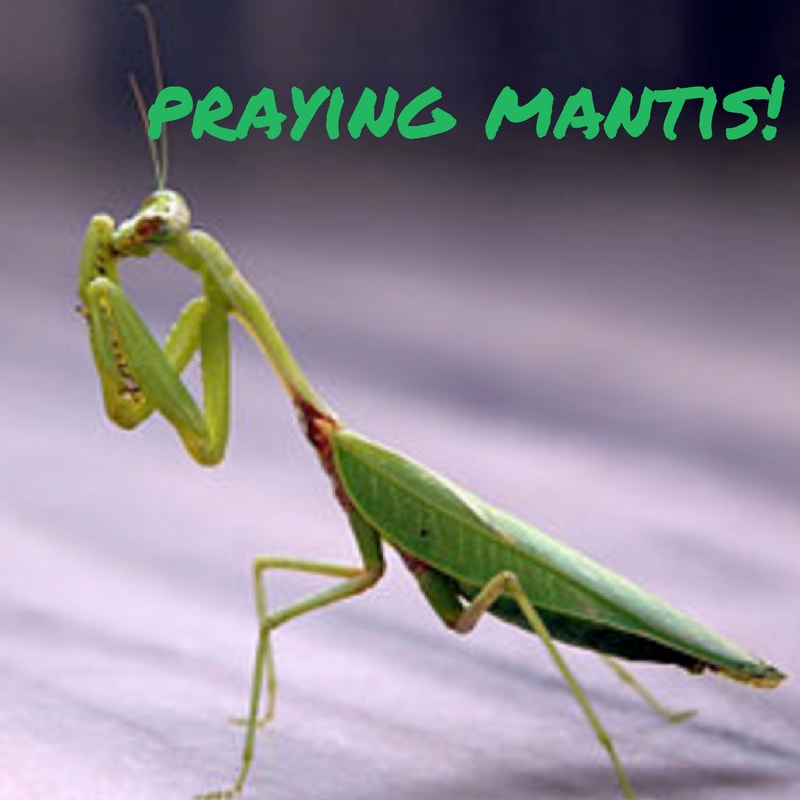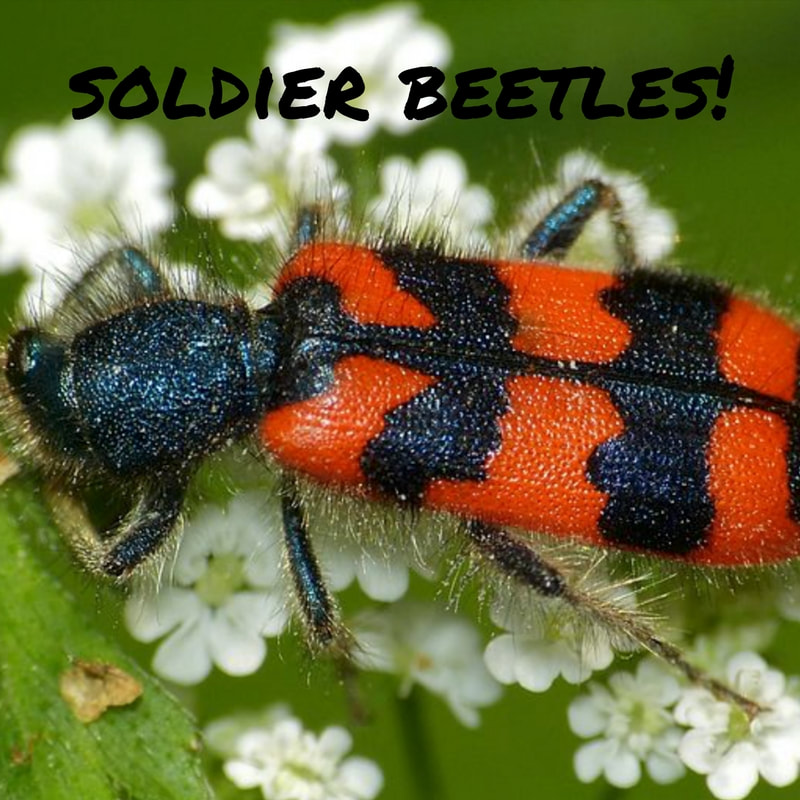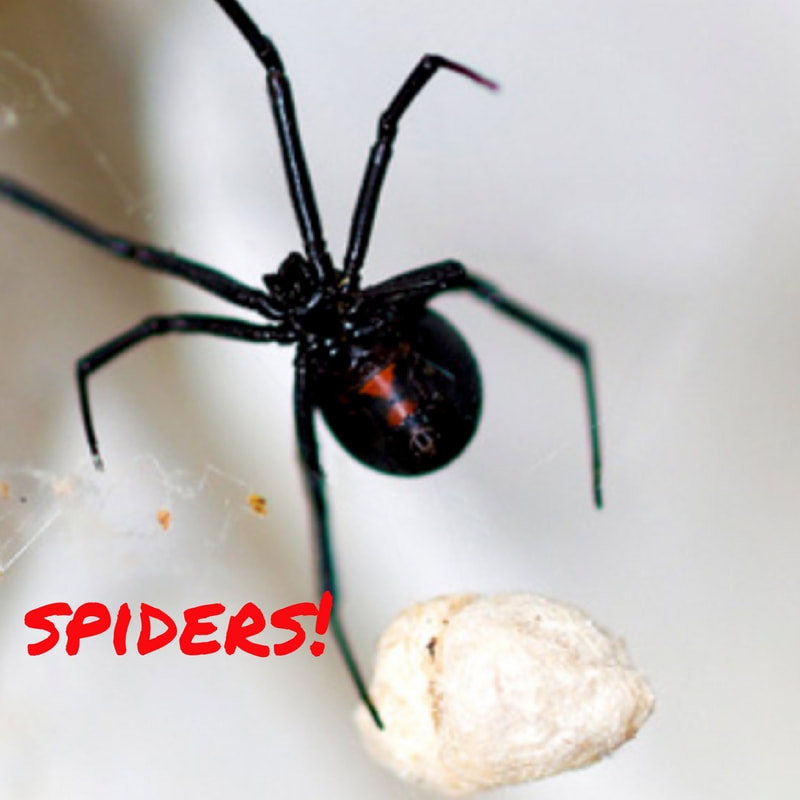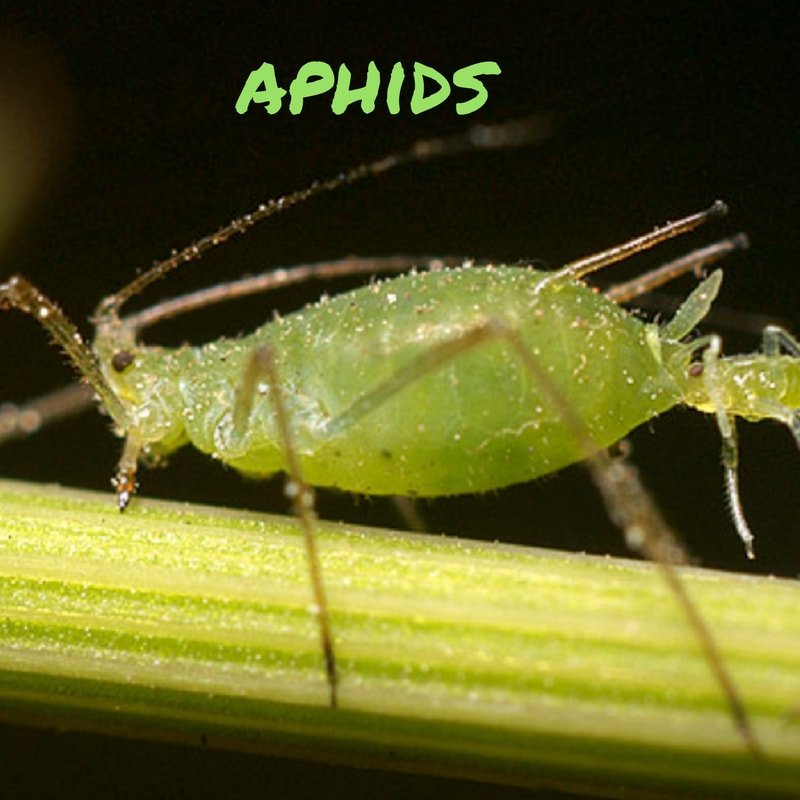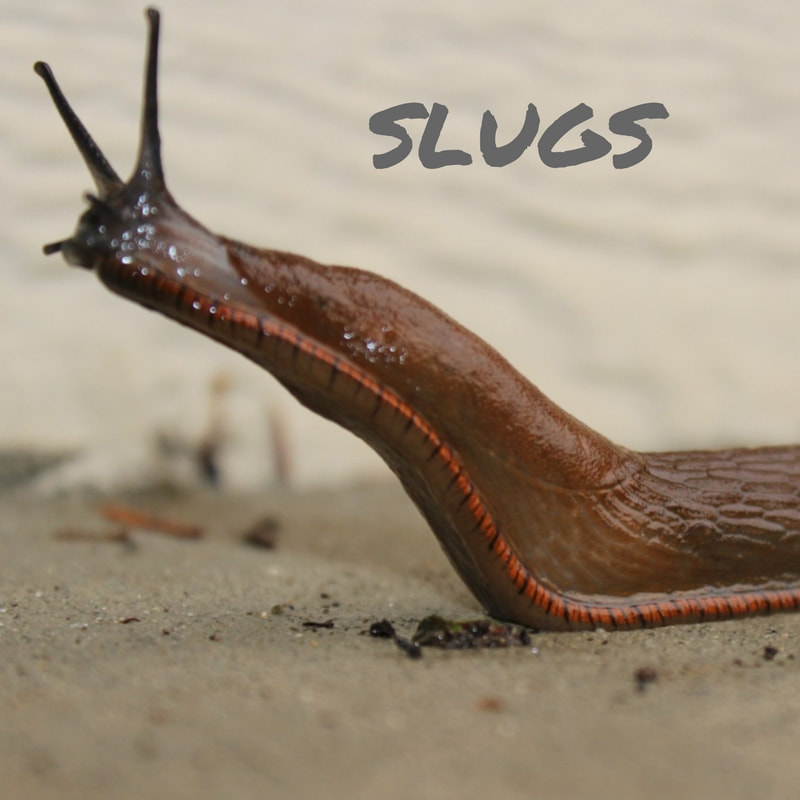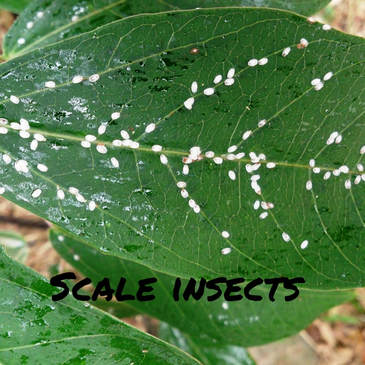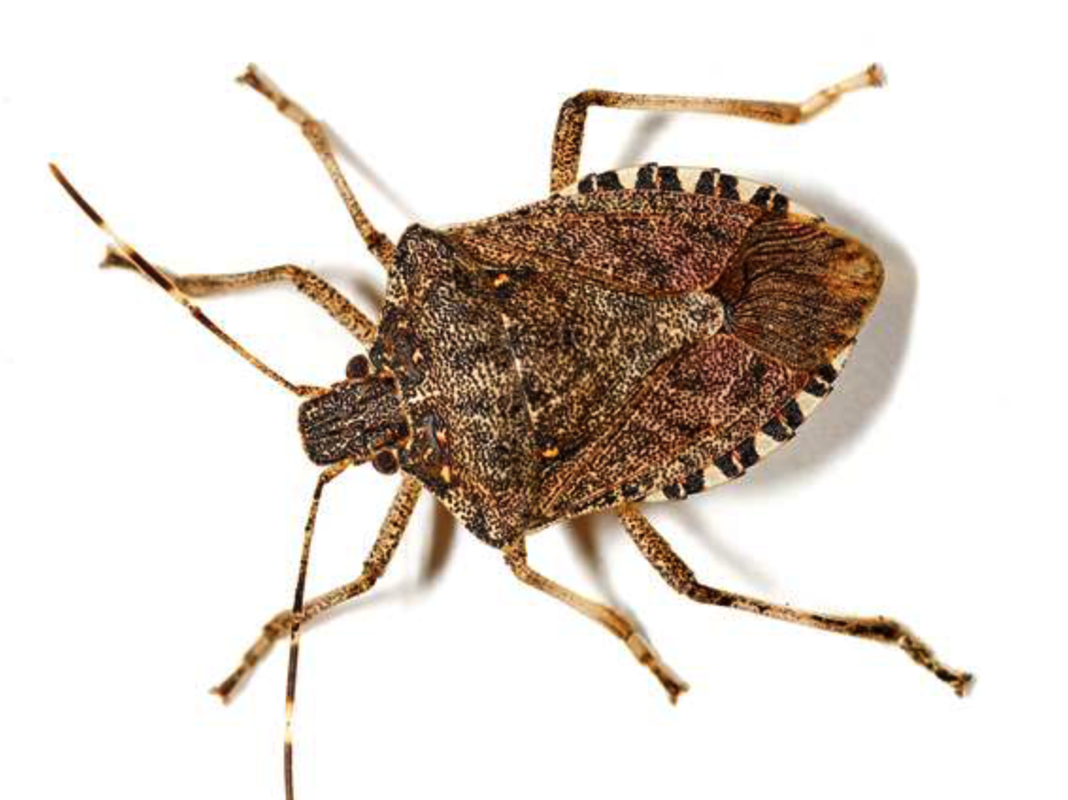Not all insects are unwanted pests in your lawn and garden. There are many "beneficial" insects that will prey on garden pests. By growing plants that give them food and shelter, minimizing pesticide use, and providing alternative ground covers, you can attract beneficial insects to your lawn or garden.
|
Dragonflies are large colorful insects that dart and hover over ponds and bodies of water. They have huge large eyes that occupy most of the head and two pairs of wings that may be plain or patterned. Dragonflies catch and eat their pray in flight. Smaller dragonflies eat mosquitos, midges, and small moths. Large dragonflies may also capture beneficial bees, butterflies, or other dragonflies.
|
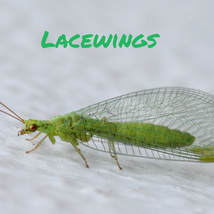
Lacewings larvae prey on aphids, whiteflies, thrips, and mites. The adults are green or brown, with small heads and large eyes. The larvae are spindle-shaped, yellow to brown, and mottled.
|
Aren't lady bugs just so cute? Otherwise known as the ladybird beetle, it's larvae eat aphids, mealybugs, scales, and other small insects. An old wives tale is if a lady bug lands on you, you get to make a wish. The number of spots on it's back means it's that many months until your wish comes true.
It's also been said the the number of dots is how old the lady bug is, but some varieties can have up to 24 spots, and I don't think a lady bug can be 24 years old! But the average age is 2-3 years!! |
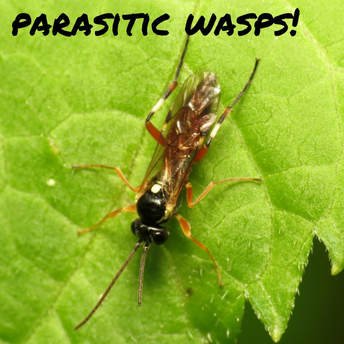
Parasitic Wasps vary in size and attack a variety of caterpillars, beetle larvae, flies, and aphids. You don't have to worry about this type of wasp biting you... most don't have a stinger, and they aren't really interested in us anyways. They're always on the hunt for food!
|
Praying Mantis's are the ultimate predator in your garden. They eat everything and anything that they happen upon, including each other. There are videos on youtube showing the mantis vs all types of things - versus snakes, frogs, black widows, etc.
|
|
Nothing invokes fear like a huge, weird spider near you! Spiders prey on anything that crosses their path. In the fall here in Maryland, the orb weavers and the crab spiders cast these large webs catching lots of prey (stink bugs, mosquitos, flies, etc) and getting big and fat before winter only to have them be eaten by birds. Do be aware that Black Widows are common here in Maryland, mostly outside so be careful while you're working in your yard around things like your wood pile. Most spiders blend into the environment really well, but the black widow is shiny and black, even if you can't see the red on it's abdomen.
If you'd like to identify what kind of spider is around your home, check out the Department of Natural Resources site where they describe many different groups of spiders to help you out. |
|
Garden slugs are one of THE most despised garden pests. They eat leaves, stems, flowers, and roots. Small seedlings in the garden are especially vulnerable. Slugs prefer cool, moist hiding places during the day. Wet spring conditions favor slug problems.
2 ways I've gotten rid of slugs is you can place a 2x4 or other piece of wood directly into your garden. They will hide underneath the wood, so you can pick them up and dispose of them! Another way is to set out a pie tin or shallow dish full of beer over night! The next morning, the slugs will have crawled in and drowned. |
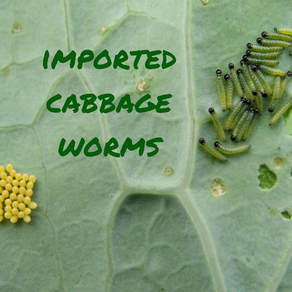
If you've tried to grow cabbage, broccoli, cauliflower, kale, kohlrabi, mustard, radishes or turnips, then you're familiar with the imported cabbage worm. The adult cabbageworm, is a white butterfly with several black spots. It emerges in the early spring and lays tiny yellow eggs on the underside of the leaves. The larvae are velvety-green with a yellow or orange stripe down their backs.
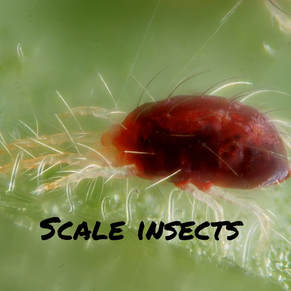
Spider mites are reddish-brown or pale in color, they have 8 legs, and are barely visible to the unaided eye. They mainly walk on the underside of leaves. Spider mites suck out the contents of the individual plant cells with their mouthparts, causing the leaves to look dirty or stippled. Silken webbing under and between the leaves may be evident when populations of the spider mite are high.
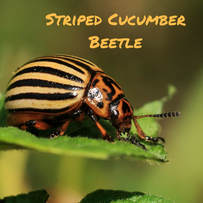
Striped cucumber beetles emerge early in the season and often eat young seedlings of cucumbers, squash, pumpkins and melons. Adults later feed on leaves, vines, and fruits. They transmit bacterial wilt disease.
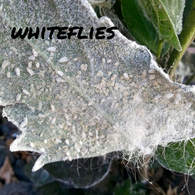
Whiteflies are a major threat in greenhouses. They attack many different kind of garden plants, including tomatoes.


